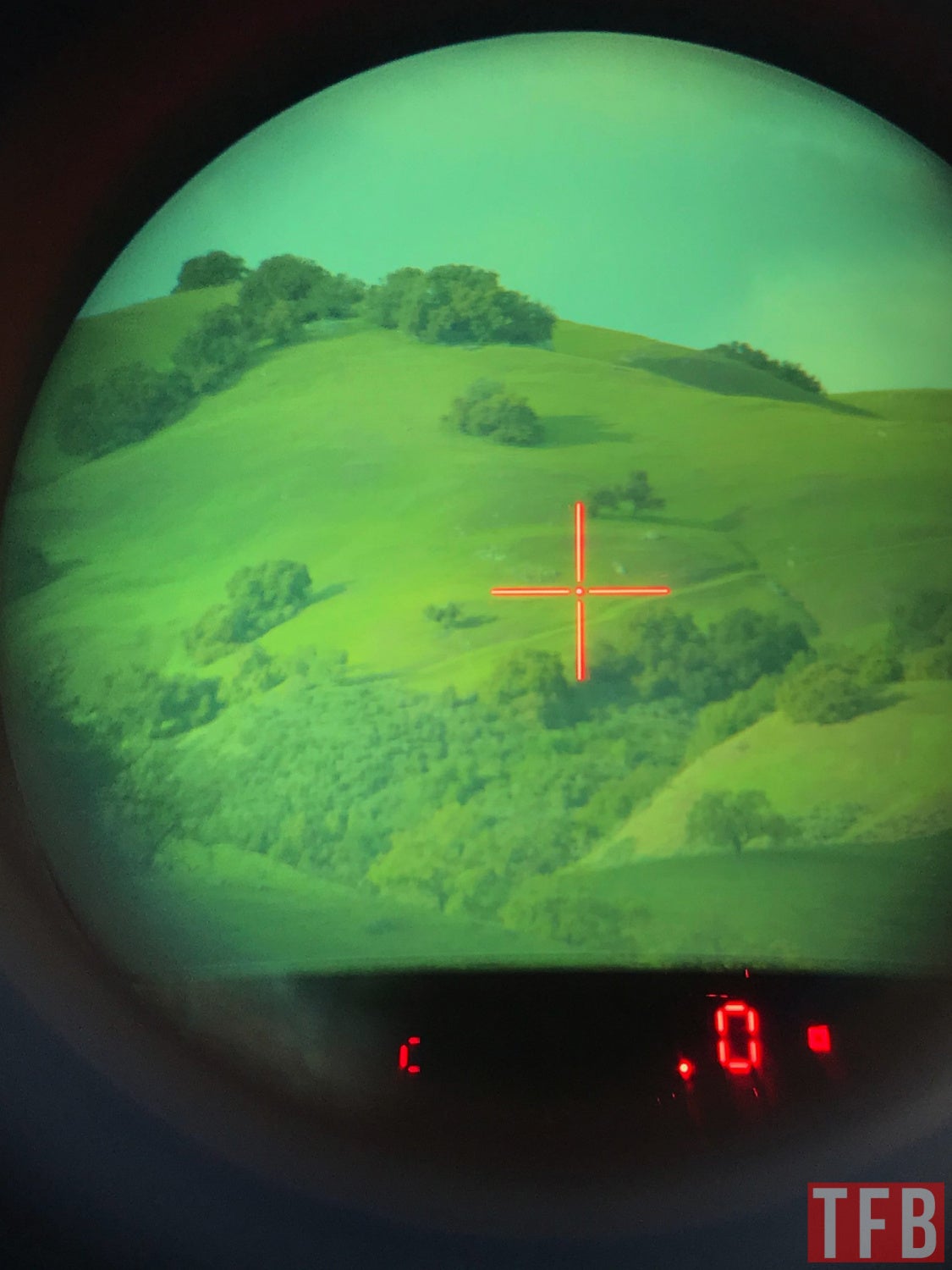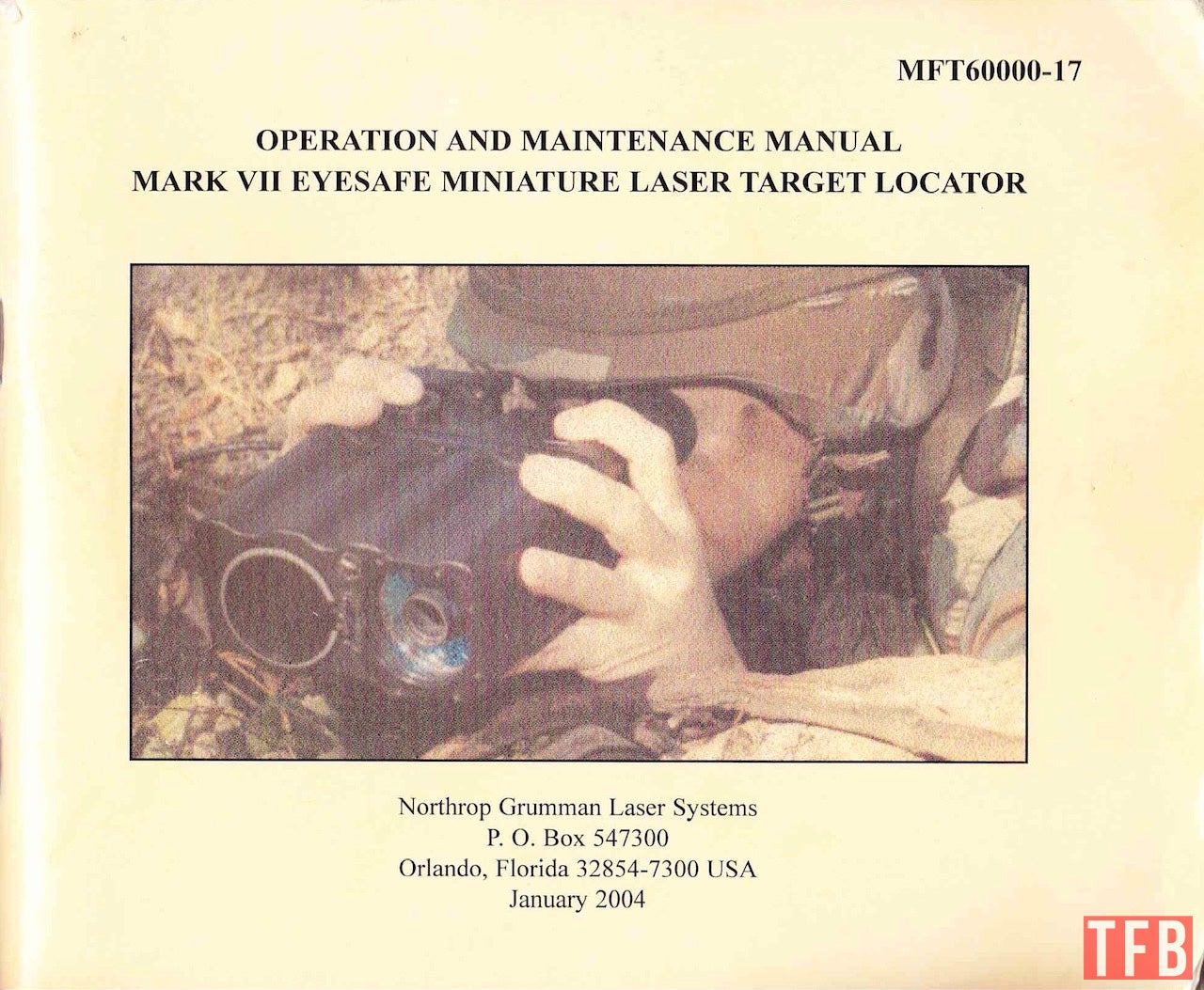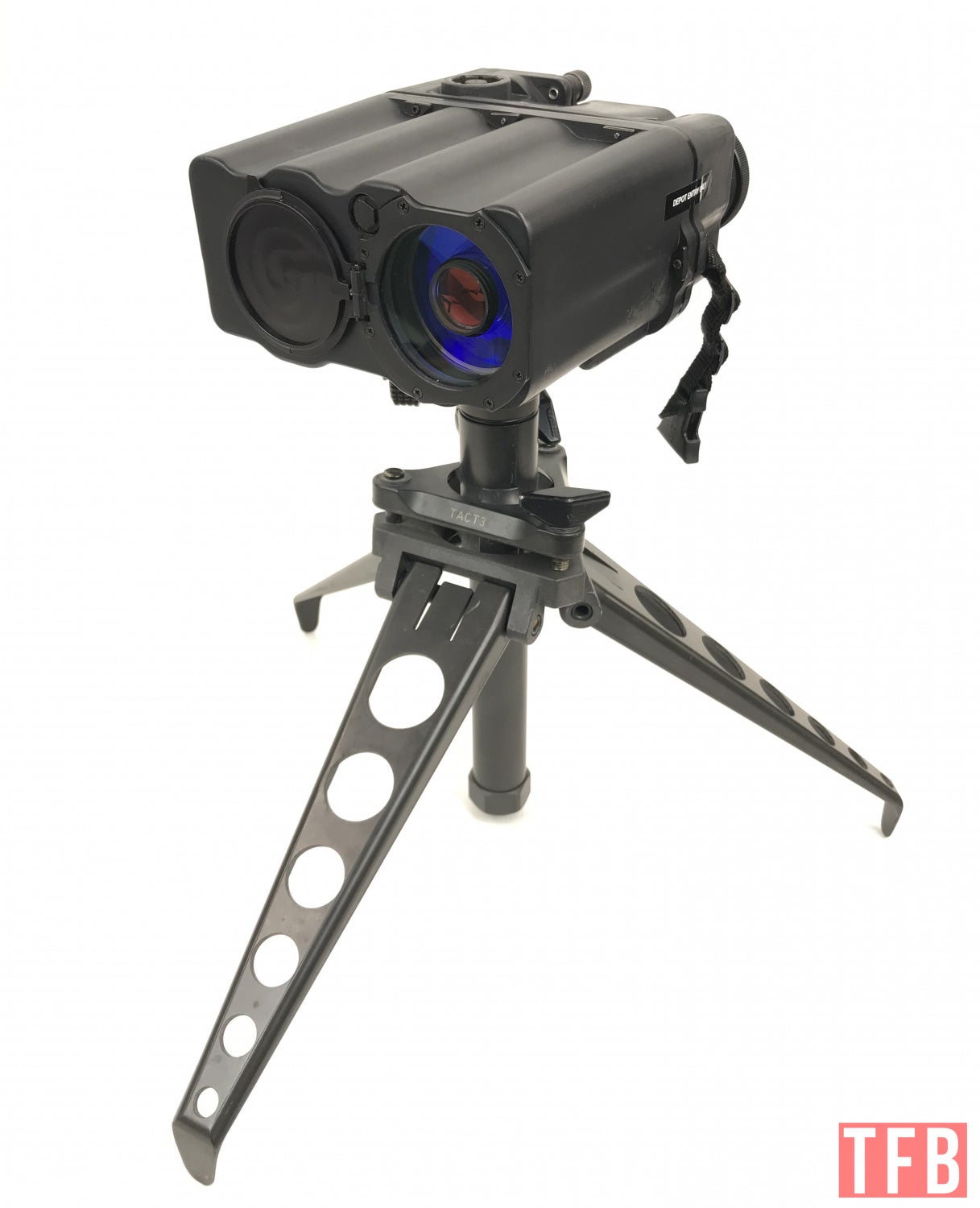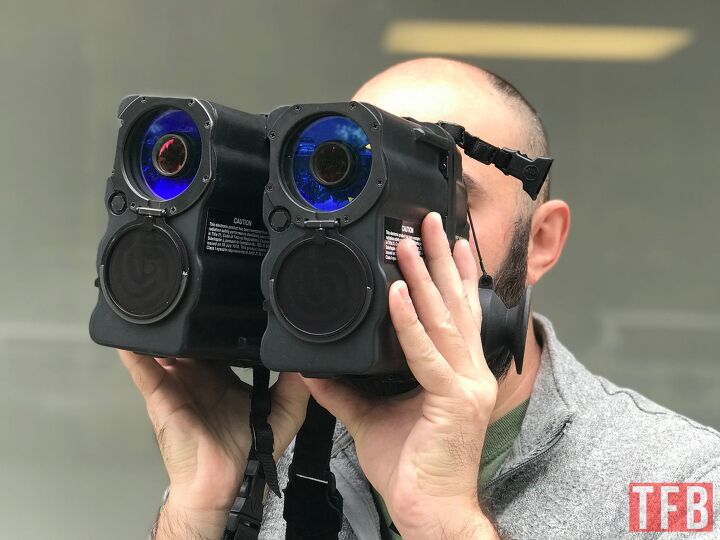Have you ever tried to use a laser range finder (LRF) at night? Try it with night vision. The ones made for hunting seem to have coatings that block infrared light making it harder to see through them at night. Well, the US Government had the MARK VII made by Northrop Grumman. It is a glorified laser range finder on steroids. According to sources, it can range out as far as 10,000 meters or 10 kilometers. Thanks to a friend, I got to take a closer look at one.
MARK VII – A Laser Rangefinder To Rule Them All
The Northrop Grumman MARK VII is a 2004 era Eyesafe Laser Target Locator. It says so on the bottom of the unit.
I found a news release about the MARK VII dated May 24, 2004:
APOPKA, Fla., May 24, 2004 (PRIMEZONE) — The U.S. Army has selected Northrop Grumman Corporation (NYSE:NOC) to equip more Army forces with the Mark VII system, a lightweight, handheld target location system with an eyesafe laser rangefinder and switchable direct-view day-vision and image-intensifier night-vision capability which enables ground forces to pinpoint critical enemy targets.
The contract, valued at $35 million, is for the production of 1,008 Mark VII laser target locator systems.
Northrop Grumman’s Laser Systems business unit has delivered 96 Mark VII systems to the Army since May 2003 as part of an initial 315-unit order. Deliveries under the current follow-on contract are expected to begin in August 2004.
“The advanced laser technology of the Mark VII and its compact design are critical to forward observers, forward air controllers, and long-range reconnaissance patrols,” said Steve Guch, director of the Laser Systems business unit.
The Mark VII also features an imbedded digital magnetic compass and provides range, azimuth, and elevation digital data output for accurate target location determination. The Mark VII is currently used by several branches of the U.S. armed forces as well as a number of NATO allied forces.
$35 million for 1,008 units? That makes one of these $34,722 each about 14 years ago!!

No, I did not make a mistake. The MARK VII can range out to 10km at least according to my friend and the manual that came with his MARK VII.

While the MARK VII can range out pretty far we were only able to get a few kilometers range. Still further than any of our standard range finders.
What sets the MARK VII apart from your standard laser range finder is the range obviously but the fact it has built-in night vision. In the photo above you can see a paddle switch with the word “DAY” engraved and paint filled in. Flip the paddle 180° and an image intensifier tube flips into the path of the range finder.

MARK VII day mode

MARK VII Night Vision mode
I opened the MARK VII to swap out the green phosphor tube for an L3 filmless white phosphor tube. It is not as easy as building a PVS-14. Since the intensifier tube swings into view of the day view, there has to be some sort of prism HUD that displays the crosshairs and information. You can see in the photo above the digital information is red. If that display had been shone through the intensifier tube it too would be green. That is not the case here.

Sure enough. The intensifier tube is somewhat buried behind the image display for the range finder.

When you flip the DAY/NIGHT paddle, the intensifier tube swings in front of that prism display.

It wasn’t easy but I was able to swap the tube and use white phosphor in the MARK VII.

A Closer Look At The MARK VII

The MARK VII that my friend has came with a bunch of extra wires and a cable release.


The battery for the MARK VII is a stupidly expensive non-rechargeable battery that is VERY proprietary. It is the same size as a D-Cell battery but puts out 3.9v. Just one of these goes for $88.

Here is the cover to the MARK VII manual.


Siblings?


The objective lens sort of looks like a reflex lens but it is not.

The lens cap is milled aluminum.



According to the manual, the laser is emitted out the outer ring.

The backside has the eyepiece, battery door and selector knob.
- BRT – Adjusts brightness of the reticle and display for both DAY and NIGHT modes
- SYS – System Mode. Measurement accuracy figures of merit and diagnostic voltage checks.
- DMC – Digital Magnetic Compass mode. Take Azimuth and Elevation without range finding.
- LST – Last pulse laser range finding. It uses the last target return to convert to range.
- FST – First pulse laser range finding. It uses the first target return to convert to range.

The fire button is on top and has a QD socket for the camera style plunger release.

Night mode engaged.
The remote fire cable is just an updated version of old camera cable releases. It is a cable that physically pushes the fire button. Just like in photography, you do not want the MARK VII to move when hitting the fire button especially when you are trying to range longer distance targets.


In the MARK VII manual, there is an alternative recommendation for battery. The BCX-85D are expensive. These SAFT lithium cells are around $10-$20 each and power the MARK VII. They are only 3.6V and are not rechargeable.

With the battery door open you can see two dip switches. One switch is for changing from degrees to MILS. The other switch is for changing from serial interface to PLGR (Precision Lightweight GPS Receiver) interface.


Here is the connection for hooking up the PLGR or computer to the MARK VII.

The eyepiece has a shutter eye cup. They make these for PVS-14 eyepieces as well. It is designed to block light coming back and lighting up your face or eye socket. This is more for night vision use than day use. You push the face into the eyecup and the shutter is pushed forward and it opens.




The carrying case uses ALICE Clips. The lid stores one of those lithium batteries in a small pouch sewn on the underside. You can only position the MARK VII this way otherwise the eyepiece and eyecup will hit the battery pouch.

Fully padded interior.

The shoulder strap is removable only on one side. There is a D Ring and a clip. Unclip the strap and store it into the pouch on the other side of the case.


For $34k you get a nice camera strap for wearing the MARK VII around your neck.

What is most interesting about the MARK VII is how fast it ranges objects. It is instantaneous. Normally you have to push your laser range finder button down and wait for the laser to shoot out and bounce back into the device. That does not happen with the MARK VII. You do have to wait for the charge to build up in the device. Listen to the audio in the video below. You can hear the capacitor build up a charge. Then an open square icon shows up to the right of the numbers which means it is ready to be fired.
The odd thing about the MARK VII is that I cannot see the laser emitted like I do with normal laser range finders. I tried to see the laser with my SiOnyx Aurora but it could not see the laser either. I looked at the front of the MARK VII with the Aurora and I was able to see a hint of purple. So while it can see something it cannot see the laser downrange.
Even though the MARK VII says eye safe, do not look into it and fire the laser.


Final Thoughts
The laser range finder and night vision capabilities of the MARK VII are cool but only scratch the surface of what this unit is really designed to do. My friend does not have the PLGR or the computer that hooks up to the MARK VII. Even if he did who would he send that information to? This unit is so large and bulky. It predates the iPhone. I bet an iPhone X could handle all the computing necessary for this unit. It is a neat piece of night vision history but ultimately not worth buying unless you can buy one cheap. My friend’s MARK VII does not seem to be able to reach its full potential and range out to 10km. Not sure if we are doing something wrong or if the unit is past its prime. Maybe a little bit of both?
 Your Privacy Choices
Your Privacy Choices

